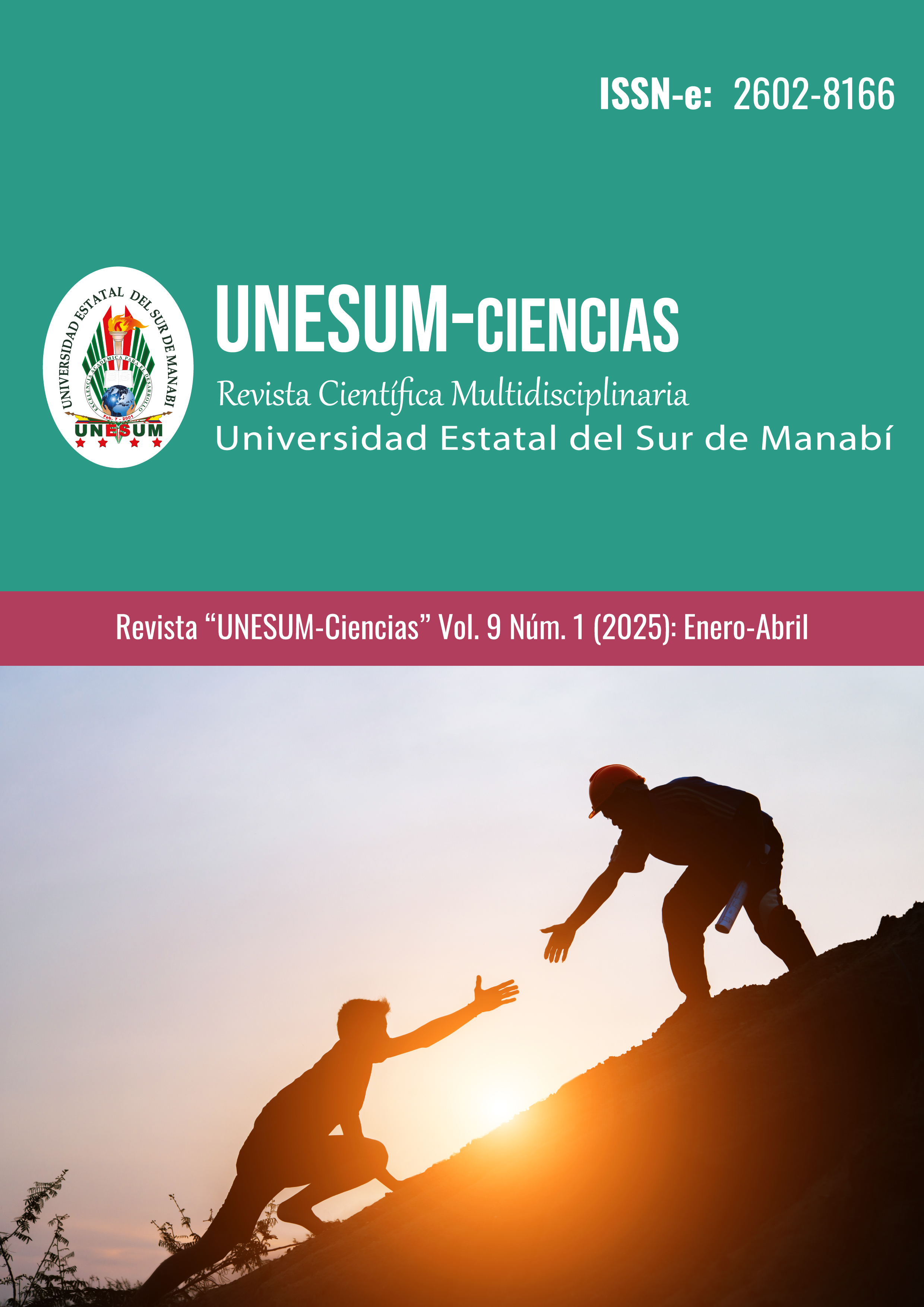Valorización energética de los Residuos Sólidos Urbanos (RSU) generados en el Litoral Ecuatoriano
DOI:
https://doi.org/10.47230/unesum-ciencias.v9.n1.2025.42-50Keywords:
Urban solid waste, characterization, calorific value, energy recoveryAbstract
The aim of this study was to evaluate solid waste energy through the characterization, determination of the elemental composition, and estimation of the energy potential of the El Empalme canton located on the Ecuadorian coast. For 2 months, 8 samples of 50 kg each were collected through the NORM NMX-AA-015-1985. ENVIRONMENT PROTECTION - SOIL POLLUTION - MUNICIPAL SOLID WASTE - SAMPLING - FOURTH METHOD, and then mathematical equations were used to establish the volumetric weight, determination of the physical composition of the waste; and the caloric power by empirical models (Dulong, Steuer's and Scheure's Kestners). Organic waste accounted for 62.25% of the 15 categories identified, followed by glass (7.35%); plastic (12.78%); metal (1.58%) and others (2.78%). Similarly, the presence of C was found in greater amounts in food waste (72.21%); followed by cardboard (66.52%); and wood (60.09%). The caloric power analyzed with the estimate shows a variability significant.
Downloads
References
Abu-qudais, M. y Abu-qdais, H.A. (2000). Energy Content of Municipal Solid Waste in Jordan and Its Potential Utilization. Energy Conversion and Management, 41, 983-991.
https://doi.org/10.1016/S0196-8904(99)00155-7
Aslani, H.; Taghipour, H. (2018). Seasonal characterization and quantification of municipal solid waste: energy content and statistical analysis. J Adv. Environ Health Res, 6, 34-43.
Ayeleru, O.; Okonta, F. N. y Ntuli, F. (2018). Municipal solid waste generation and characterization in the City of Johannesburg: A pathway for the implementation of zero waste. Waste Management, 79, 87-97.
Bala, R.; Gautam, V. y Mondal, M. (2018). Improved biogas yield from organic fraction of municipal solid waste as preliminary step for fuel cell technology and hydrogen generation. International Journal of Hydrogen Energy, 1-10.
Durán, C.; Rosales, P.; Fernández, S.,y Pérez, J. (2011). Viabilidad de la valorización energética de los RSU que se generan en el vertedero el Iztete , de Tepic-Nayarit .En: Ojeda Benítez, S.; Cruz Sotelo, S.; Taboada González, P..; Aguilar Virgen. Q. (Coor.). Hacia la sustentabilidad: los residuos sólidos como fuente de materia prima y energía. UABC. Baja California, México. pp. 361-366.
Malkow, T. (2004). Novel and innovative pyrolysis and gasification technologies for energy efficient and environmentally sound MSW disposal. Waste Management, 24(1), 53-79.
Saldaña, C.; Hernández, I.; Messina, S. y Pérez, J. (2013). Caracterización física de los residuos sólidos urbanos y el valor agregado de los materiales recuperables en el vertedero el Iztete, de Tepic-Nayarit, México. Revista Internacional de Contaminacion Ambiental, 29(SUPPL. 3), 25-32.
Saqib, N.; Baroutian, S. y Sarmah, A. (2018). Physicochemical, structural and combustion characterization of food waste hydrochar obtained by hydrothermal carbonization. Bioresource Technology, 266(July), 357-363.
Singh, D.; Satija, A. y Hussain, A. (2018). Predicting the calorific value of municipal solid waste of Ghaziabad City, Uttar Pradesh, India, using artificial neural network approach. Advances in Intelligent Systems and Computing, 584, 495-503.
Vlaskin, M. S. (2018). Municipal solid waste as an alternative energy source. Proceedings of the Institution of Mechanical Engineers, Part A: Journal of Power and Energy, DOI: 10.1177/0957650918762023
Published
How to Cite
Issue
Section
License
Copyright (c) 2025 RODRIGO PAUL CABRERA VERDEZOTO

This work is licensed under a Creative Commons Attribution 4.0 International License.




